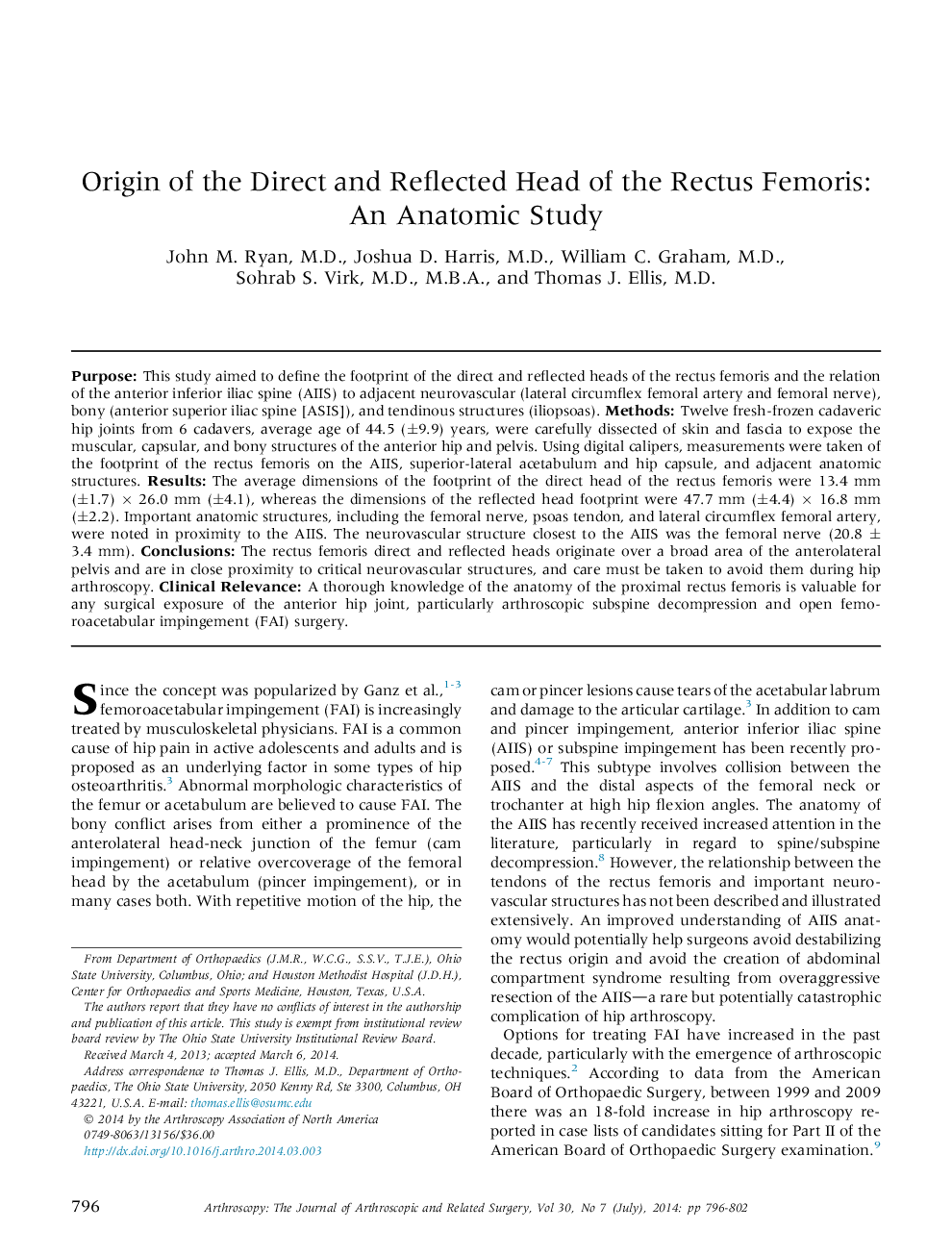| Article ID | Journal | Published Year | Pages | File Type |
|---|---|---|---|---|
| 4043203 | Arthroscopy: The Journal of Arthroscopic & Related Surgery | 2014 | 7 Pages |
PurposeThis study aimed to define the footprint of the direct and reflected heads of the rectus femoris and the relation of the anterior inferior iliac spine (AIIS) to adjacent neurovascular (lateral circumflex femoral artery and femoral nerve), bony (anterior superior iliac spine [ASIS]), and tendinous structures (iliopsoas).MethodsTwelve fresh-frozen cadaveric hip joints from 6 cadavers, average age of 44.5 (±9.9) years, were carefully dissected of skin and fascia to expose the muscular, capsular, and bony structures of the anterior hip and pelvis. Using digital calipers, measurements were taken of the footprint of the rectus femoris on the AIIS, superior-lateral acetabulum and hip capsule, and adjacent anatomic structures.ResultsThe average dimensions of the footprint of the direct head of the rectus femoris were 13.4 mm (±1.7) × 26.0 mm (±4.1), whereas the dimensions of the reflected head footprint were 47.7 mm (±4.4) × 16.8 mm (±2.2). Important anatomic structures, including the femoral nerve, psoas tendon, and lateral circumflex femoral artery, were noted in proximity to the AIIS. The neurovascular structure closest to the AIIS was the femoral nerve (20.8 ± 3.4 mm).ConclusionsThe rectus femoris direct and reflected heads originate over a broad area of the anterolateral pelvis and are in close proximity to critical neurovascular structures, and care must be taken to avoid them during hip arthroscopy.Clinical RelevanceA thorough knowledge of the anatomy of the proximal rectus femoris is valuable for any surgical exposure of the anterior hip joint, particularly arthroscopic subspine decompression and open femoroacetabular impingement (FAI) surgery.
